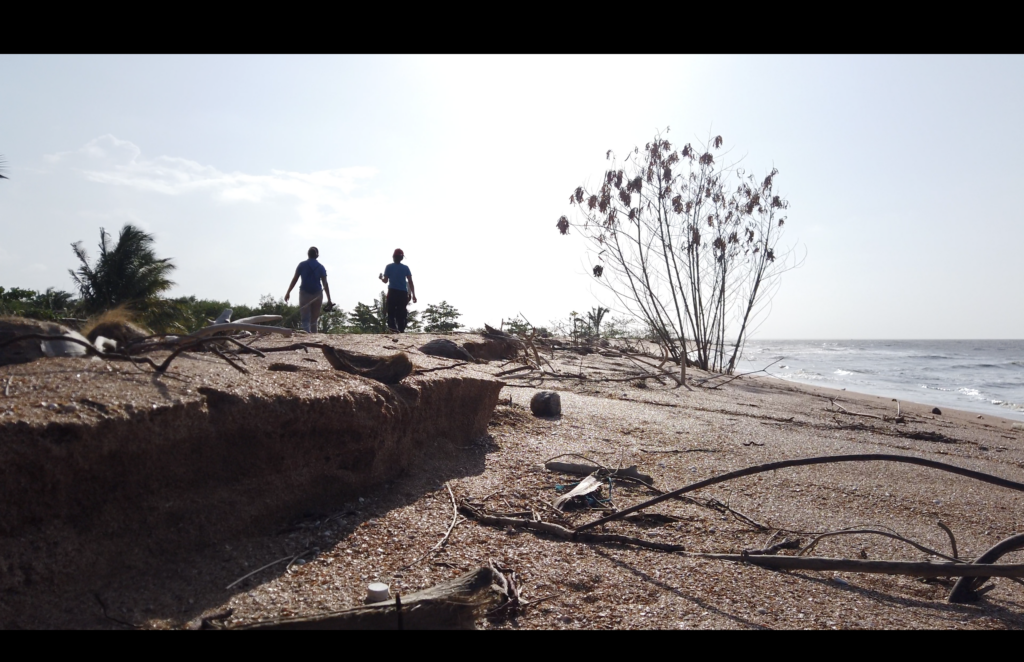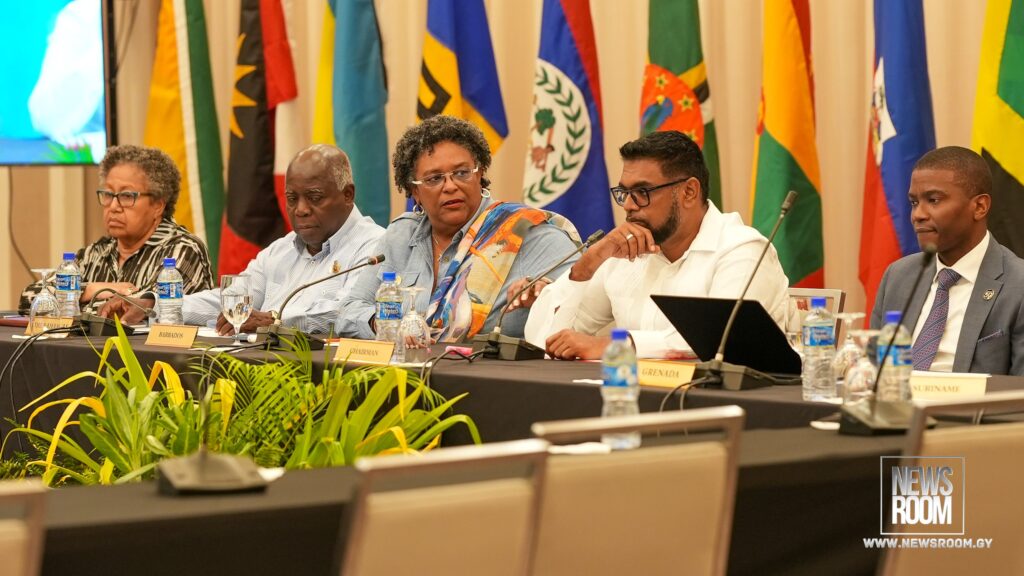
Can Guyana help the Caribbean get the money it needs?
By Neil Marks
The problem is clear: The Caribbean needs money.
Money for what? To bounce back after being hit with one problem after the other. The COVID-19 pandemic crippled tourism, the backbone of the islands. Russia barged into sovereign Ukraine and that led to disruptions in global shipping, just as COVID did, driving prices up. And now, the war in Gaza has made things worse.
But that’s not the end of the problems. Climate change threatens the very existence of the small island states. And let’s not leave Guyana out of that equation. The coast, lapped by the Atlantic Ocean, where almost everything happens, is in a precarious position – it’s below sea level. With temperatures rising, gigantic rivers of ice in areas such as Antarctica and Greenland melts, swelling the oceans. Also, when water gets warmer, the volume of the water increases. Expert data shows the sea has risen by four inches from what it was in 1993.

So how does the Caribbean find money to (a) bounce back, stay afloat and grow and (b) adapt to climate change, meaning handle the effects of the rising sea but also finding new ways of doing things, like agriculture?
Leaders of the 15-nation Caribbean Community (CARICOM) are sure the money two meet these two pressing needs is out there.
There are doing two things to get it:
- Replenish the CARICOM Development Fund (CDF) and find others to buy in. The Fund was set up to provide financial and/or technical assistance to disadvantaged countries, regions and sectors, in the implementation of the Caribbean Single Market and Economy (CSME). The CSME is the arrangement for free movement of goods, services, persons, capital and technology and it confers the right of CARICOM Nationals to establish a business in any participating CARICOM Member State
- Kickstart the Blue-Green Investment Corporation (BGIC), a public-private initiative of Barbados largely intended to finance the Caribbean’s adaptation measures. It hopes to draw financing from banks, credit unions, pension funds and insurance companies to finance low-carbon projects in various sectors such as agriculture, energy generation, water conservation and housing.
There is no mistake about the urgency with which Caribbean leaders see the need for funding.

“This is a case for us of how do we resume normal business? The last few years have been difficult and we’ve moved from crisis management to crisis management to crisis management, but we are at a stage now where we have to resume our normal economic growth trajectory,” said Mia Mottley, Prime Minister of Barbados Wednesday at the concluding press conference of the CARICOM Heads of Government meeting in Georgetown.
So how is Guyana helping?
In comes Dr Bharrat Jagdeo, Vice President of Guyana, an economist by training.
He will chair a working group that will pursue the financing the Caribbean needs. He will work with Mottley. They have been given four months to do some serious work.
According to Mottley, the job is to come up with “the reports and the recommendations necessary to unlock more funding to capitalise the Caricom Development Fund.”
The Fund has already benefited from two funding cycles and the third cycle is coming up. As Mottley admits, it’s been a “contentious issue” over the years.
But they made some progress in Georgetown.
“…we were able, under the very careful and strong leadership of President Ali…to settle the contribution cycle for the next few years,” Mottley reported.

But even if member states replenish the Fund, “it is not going to be enough,” Mottley said.
“…we need to have a pathway to be able to secure a sustainable growth – fair and equitable growth – for our people.”
And that’s the pathway she and Jagdeo will look to build – getting banks to release the liquidity, or the cash that they have on hand and can lend instead of holding it, so “governments can get access to concessional funding to be able to promote growth.”
“It is our view that the region is full of liquidity, but what is missing is the appropriate mechanism to unlock that liquidity and to allow those countries that need access to concessional funding – as is available under the Caricom Development Fund – to be able to access them so that we can build out the systems to promote growth…,” said Mottley.
Apart from Jagdeo’s leadership in the hunt for financing, how else is Guyana helping?
We go back to the Blue Green initiative. Guyana has committed US$15 million. This is the similar amount that has been committed by Barbados, the Bahamas, the Green Climate Fund and the Latin American Development Bank. There is also a commitment of US$2.5 million from the United States Agency for International Development. So that’s over US$75 million, but they are looking to get at least a US$100 million in seed capital.
“Barbados has a draft bill for the institution, and we hope to operationalize this institution as a matter of urgency to service the needs of the Caribbean Community with respect to resilience and adaptation,” said Mottley.
As if it needed to be said, she explained the urgency.
“What faces our region now is the reality that we are both trying to build resilience through adaptation and those adaptational systems and adaptation infrastructure to better face the climate crisis that is already bedeviling the region, both in terms of hurricanes and floods, but also in terms of droughts and sargassum seaweed, that we need to be able to have a clear platform for access for funding for adaptation.”
But Guyana is doing more than just putting in money into the Blue Green initiative.
“We have made it very clear that Guyana will support the Blue Green initiative and Guyana will be playing a critical role in helping to mobilise resources from international financial institutions, and also leveraging regional capital to invest in the Blue Green bank,” Dr Irfaan Ali, Guyana’s President told the News Room on Thursday.
He sees the potential of the initiative.
“This is a facility that can allow us to raise capital for commercially viable projects also, thinking about renewables, thinking about energy transition, thinking about public infrastructure projects. So ,from an investment perspective, Guyana will be working closely with Barbados and other stakeholders in raising resources, to support not only transition and resilient adaptation, but to support commercial type opportunities in the whole context of transition.”
Does it make sense to invest in adaptation? Mottley is sure of it.
“I say simply to you, every dollar we spend in adaptation and building resilience, we save $7.00 in losses, and this has been studied, recorded and accepted globally.”




